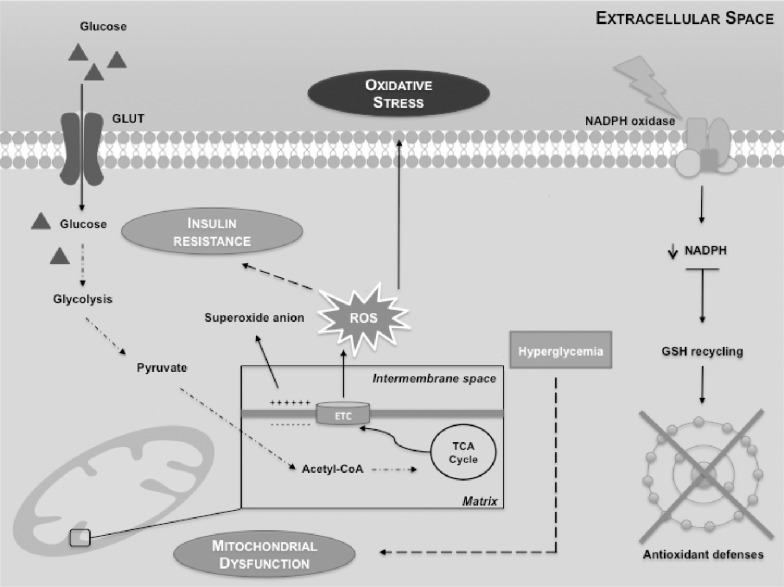Fig. (1).
Mitochondrial dysfunction and sustained activation of nicotinamide adenine dinucleotide phosphate (NADPH) oxidase lead to insulin resistance, reactive oxygen species (ROS) production and impaired antioxidant defenses. Mitochondria are the main generators of ROS within electron transport chain (ETC). In normal conditions, glucose breakdown starts by glycolysis, generating among other compounds, pyruvate. Pyruvate is then converted into acetyl coenzyme A (acetyl-CoA) that enters the tricarboxylic acid (TCA) cycle. The produced electrons are stored in molecules that are then injected into the ETC, to generate the electrochemical gradient. Mitochondrial superoxide production is a major cause of the oxidative damage. This is particularly important since ROS may contribute to insulin resistance. Sustained activation of NADPH oxidase leads to decreased intracellular levels of NADPH and therefore the recycling of reduced glutathione (GSH) is limited, impairing antioxidants defenses.

